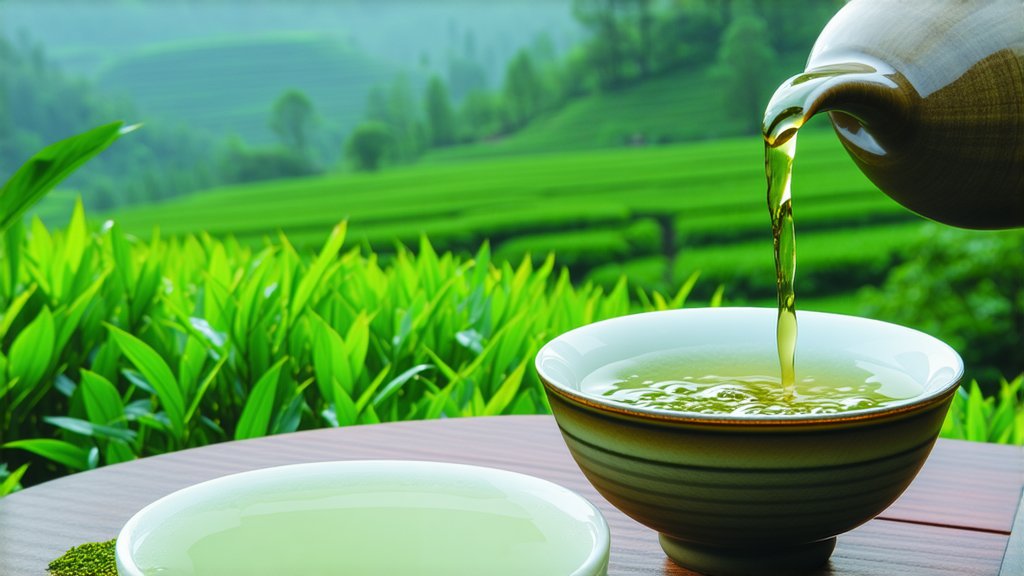
Longjing Tea, often referred to as "Dragon Well" tea, is one of the most celebrated varieties of green tea originating from China. This exquisite beverage holds not only a significant place in Chinese history but also stands as a testament to the artistry and precision embedded in its cultivation and production processes. As we delve into the world of Longjing, we uncover a legacy that spans centuries, a diversity of types, a meticulous manufacturing procedure, and an intricate method of appreciation that transcends borders.
Historical Background
The story of Longjing tea traces back to the Tang Dynasty (618-907 AD), with its prominence solidifying during the Qing Dynasty (1644-1912). Legend has it that the tea was named after a sacred spring located in the West Lake region of Hangzhou, Zhejiang Province, where two dragons once fought, creating a well—hence the name "Dragon Well." Over time, this area became renowned for producing some of the finest teas in China, with Longjing tea emerging as its crown jewel.
Varieties of Longjing
While Longjing is primarily recognized as a single variety, it encompasses several subtypes, each with its unique characteristics:
- Xihu Longjing: The most prestigious form, grown exclusively around the West Lake area. It boasts a flat shape resembling the blade of a sword, a vibrant green hue, and a delicate aroma.
- Yuhang Longjing: Cultivated in Yuhang District, these leaves are known for their robust flavor and slightly darker color compared to Xihu.
- Qiandaohu Longjing: Grown on Qiandaohu Island, this variety offers a balanced profile between the subtlety of Xihu and the intensity of Yuhang.
Each subtype reflects the terroir ofs its respective region, contributing to the rich tapestry of flavors found within Longjing tea.
Manufacturing Process
The creation of Longjing tea is an art form that requires skillful hands and keen attention to detail. Here's a glimpse into the traditional process:
- Plucking: Only the youngest shoots and leaves are handpicked during early spring when they are at their freshest and most tender.
- Withering: Freshly picked leaves are spread out thinly to allow moisture loss without direct sunlight, which helps soften the leaves for shaping.
- Fixation: The leaves undergo high-temperature treatment (usually pan-frying) to halt oxidation, preserving their green color and fresh aroma.
- Shaping: Skilled artisans then manually press and roll the leaves between their palms or use specialized tools to achieve the characteristic flat shape.
- Drying: Finally, the shaped leaves are gently dried to remove any remaining moisture, ensuring longevity and stability for storage and transport.
This meticulous process ensures that every sip of Longjing tea delivers a pure expression of its origin, embodying the essence of spring in each leaf.
Appreciating Longjing Tea
To truly appreciate Longjing tea, one must engage in a mindful tasting ritual that involves all senses:
- Visual Appreciation: Observe the dry leaves for their uniform size and vibrant green color. Upon infusion, watch how they unfurl gracefully, revealing their full beauty.
- Aroma: Inhale deeply before sipping to capture the delicate scent of fresh grass and subtle floral notes, hinting at the purity of the tea.
- Taste: Take small sips, allowing the tea to coat your palate fully. Notice the initial sweetness followed by a mild bitterness that quickly mellows into a refreshing aftertaste.
- Texture: Feel the smoothness of the liquid as it glides across your tongue, a testament to the careful handling and minimal processing involved.
- Finish: Pay attention to the lingering sensation in your mouth and throat, which should be clean, crisp, and invigorating.
Conclusion
Longjing tea is more than just a beverage; it is a cultural icon deeply rooted in Chinese tradition and a symbol of the harmony between man and nature. Its journey from ancient legends to modern tea ceremonies encapsulates a narrative of heritage, craftsmanship, and a profound connection to the land. For those seeking an authentic taste of China's green gold, exploring the diverse world of Longjing tea promises an enlightening and enriching experience.